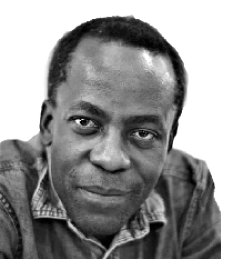‘In everyday life it’s very easy to see the borders at the edge of a nation. It literally says: “UK Border Force”. But when somebody is not going into Piccadilly Gardens [in central Manchester] because they’ve been told: “You shouldn’t go in there because you have an Afro [Afro-textured hair] and people will assume you are a drug dealer,” that’s something difficult to visualise. Photography allows us to see that. It allows us to visualise often invisible borders.’
That’s Jo Biglin, a lecturer in Social Psychology at the University of Salford, talking to PN about one of the images featured in Fence to Freedom, a photo taken by a participant in response to racism he experienced at Piccadilly Gardens in Manchester. The exhibition, launched at Salford university in November, showcases photographs from a project with people seeking asylum.
Biglin has been exploring refugees’ and asylum-seekers’ experiences of place, belonging and citizenship through creative arts-based methods.
She says: ‘Photography, like other kinds of creative production, can be a way through which people can gain control of their own narrative because they have the camera and through it, they can show the reality of their own lives.’
Commenting on the Manchester photo, which was taken from outside Piccadilly Gardens, Biglin says: ‘It was like you could almost visualise that border.’
“You shouldn’t go in there”
Encouraging and supporting marginalised groups to tell their own stories is one way to minimise, resist or counter harmful language and imagery from sections of the political and media establishment, according to Biglin.
A significant number of politicians and journalists make refugees and asylum-seekers seem like criminals by talking about ‘illegal’ immigrants and ‘bogus’ asylum-seekers, and by describing people seeking refuge as an ‘influx’ or as ‘waves’ or an ‘invasion’.
‘This idea which politicians and the media normalise is often accompanied and perpetuated through images of black and brown men, sometimes with obscured faces, pressed against barbed wire fences or in small boats,’ says Biglin.
This kind of language, and these kinds of images, suggest refugees and asylum-seekers present a threat to the British way of life. This is despite the Home Office’s own research which shows that refugees and asylum-seekers are no more likely to engage in criminal activity than the rest of the population.
This language also ignores the fact that the majority of people fleeing war, conflict and persecution generally tend to seek refuge in countries close to their own. For its part, the UK takes in significantly fewer refugees than other countries in Europe.
In addition to normalising hostility towards refugees and asylum, the way politicians and the media talk and write about asylum-seekers also leads to policies that have further negative effects on people seeking refuge.
As an example, Biglin gives the system that is in place in the UK where the home office disperses asylum-seekers to impoverished towns and cities around the country. She says: ‘The policy was partly a response to media frenzy and public concern around the “threat” refugees and asylum-seekers were being framed as presenting.
‘People seeking asylum are generally housed in areas that are experiencing deprivation and poverty. So, when politicians and the media couple that with these narratives of illegality, and also these other narratives that suggest migrants are taking British people’s jobs, it creates tension between communities.’
Biglin points out that a growing body of research also traces the UK’s restrictive asylum policies to efforts, by politicians, to limit the number of people moving to the UK from the country’s former colonies.
‘There’s a racial element, which racism has roots in colonialism. The representations we are now seeing in the media are racialised as well.’
To illustrate this further, Biglin gives media responses to the refugees created by the Russia-Ukraine War, as an example: ‘I remember news reporters were saying things like, “These people don’t look like normal refugees and asylum-seekers. They look like Europeans.” In doing this, the journalists were also exposing how worthiness or the right to asylum is decided based on how people look and the parts of the world they come from.’


